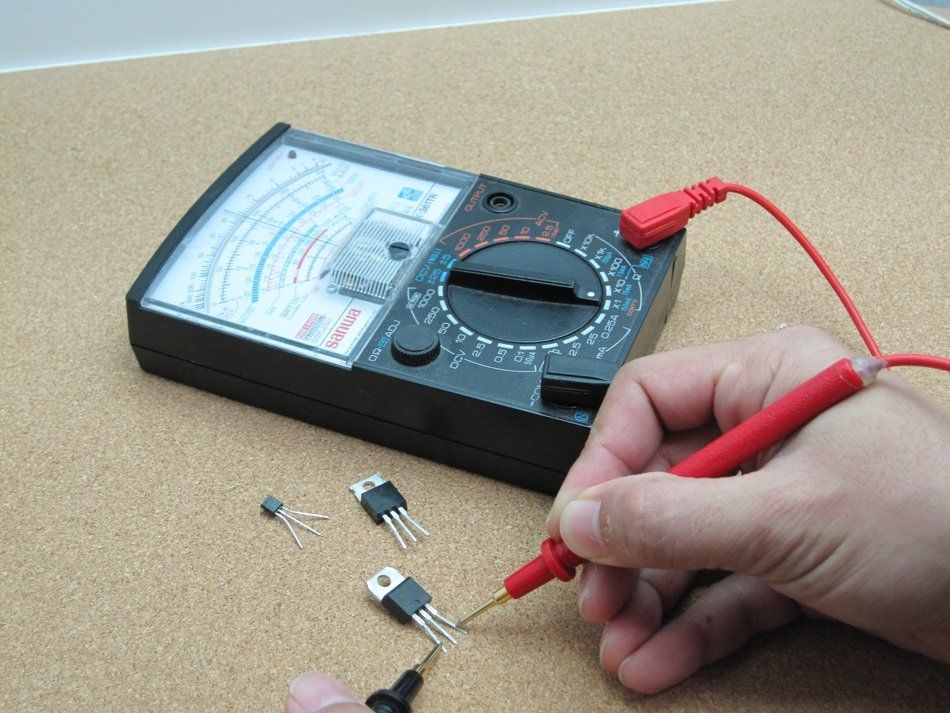Ranking of the best classical guitars for 2022
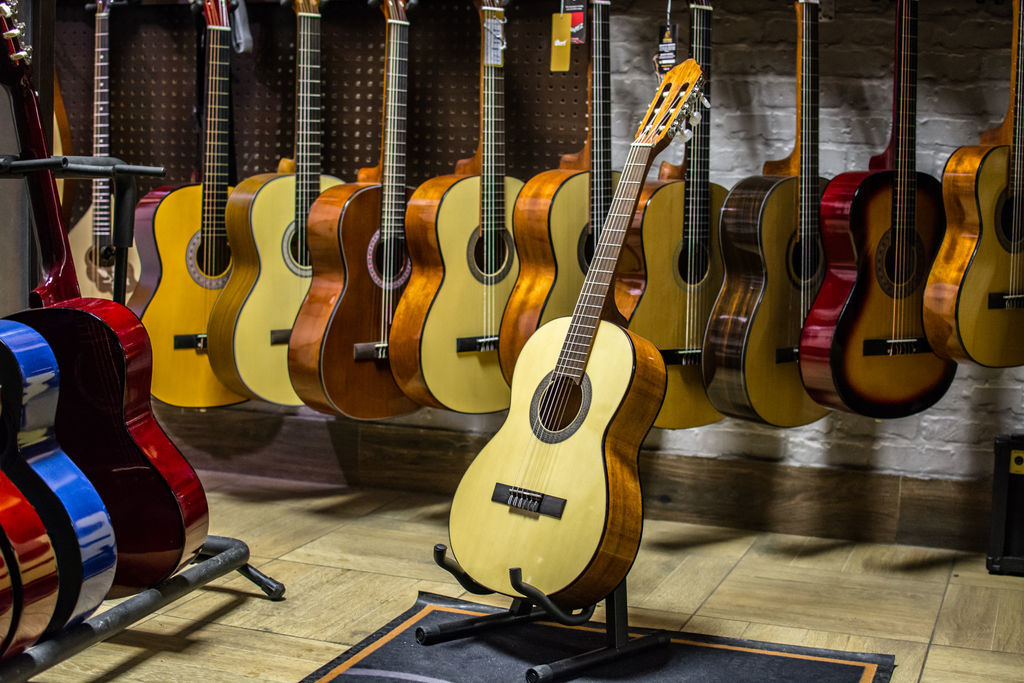
One of the most commonly used musical instruments is the guitar. It is quite easy to learn how to play it, even superficial training will allow you to play some melody. As you continue to master the simple science of playing, a large number of performance techniques, various styles, which reveal the advantages and new possibilities for playing musical notes, open up.
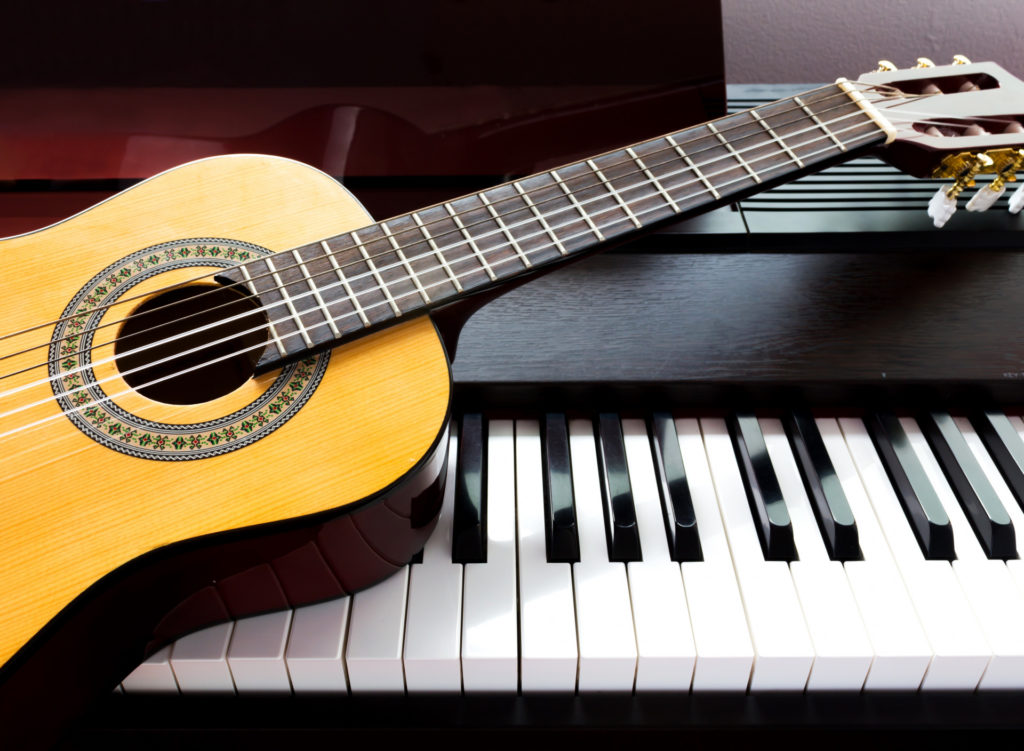
Content
Which instrument to choose: acoustic or classical
The classical guitar (Spanish, six-string) is a plucked stringed instrument, which is the main representative among classical and acoustic devices. It is used as an accompanist, for solo performance, or in ensemble reproduction of musical melodies. In its traditional form, it originates from the end of the 18th century. The instrument is endowed with great advantages, in particular, numerous performance possibilities, as well as an incredible variety of timbre sounds. The difference between a conventional guitar and an acoustic guitar is nylon strings, a wide neck and body configuration.
Of course, a branded item is good, but you need to choose a device according to its characteristics. First you need to decide on the choice of a suitable design:
- Classic devices are the most correct choice for beginners. Necks with wide and thin shapes are great for practicing fingering. Narrow-handle models on acoustic and electric guitars are not very comfortable for the fingers, they will create inconvenience, getting in the way of both the hands and the strings. The soft nylon strings used on the classics do not cause pain, do not allow the development of corns, and are quite easy to clamp and pull with bends. Experts do not advise experimenting and switching to steel, since there is very little strength for string tension, not any classical guitar can withstand high tension.
- Rigid springs (rails - amplifiers) of acoustic guitars located under the top deck, as well as anchors located in the fretboard, can accommodate steel strings. They enrich the sound and make the sound louder.Dreadnoughts called western guitars have the same properties. With the help of steel strings, pickups are easily used, as a result of which other models differ in their presence. The kit includes a built-in preamp, which creates convenience during performance, as opposed to reducing the sound with a microphone.
What to consider when choosing
Before you go to a specialized outlet, you need to familiarize yourself with the main types of traditional devices, namely with their components and the material from which guitars are made. So it will be much easier to decide on the purchase of a musical device.
Wood used in the manufacture of classical instruments
It is no secret to anyone that the composition of wood has a significant effect on the sound quality of the finished musical device. This format is very important, it calculates and sets the class. Entry-level devices are made of inexpensive plywood; in professional production, only solid plates of high-quality wood are used.
Based on such criteria, you can figure out the definition of a guitar class, according to the material from which it is made. There are several types and criteria, namely class and wood species, which explain the types of devices.

Dimensions
If the guitarist has taken the correct position, then he is easily able to reach the peg, which is responsible for the operation of the fourth string. This means holding the arm freely and straight, at least not fully extended, but slightly bent at the elbow. Fingers slightly bent at the bend: middle, index and ring fingers can reach the first, thinnest string.If you manage to reach it, but there is discomfort, and the hand rests on the guitar at the elbow, then the instrument is too large.
Types of classical guitars by material
There are three types of classical devices:
- plywood (shell, plywood deck and bottom);
- combined (plywood bottom, shell, but the deck is made of cedar arrays);
- solid plates (bottom, deck and shell, consisting entirely of solid wood).
Plywood
Guitars consist entirely of plywood, the name classical is justified only to some extent, since such a device is suitable for learning and fully meets student goals. They are intended for the first steps in mastering a musical instrument. There is only a slight external similarity with the classics, since in the first place it is a market product with a rather low quality and a small price.
Combined
The bottom and side of this type are also plywood, but the deck is made from a single plate of cedar, spruce or pine. It is strikingly different from plywood guitars, because the soundboard changes the sound a lot, giving a softer timbre.
Such samples are of decent quality, excellent sound and low cost, therefore they are in demand among many musicians. Playing on such a device, you can not only learn the rules of the game, but also touch the world of classics.
Made from solid wood slabs
Professional classical devices, the guitar class completely depends on the specialist - the manufacturer and the type of wood (the material that has the highest sound characteristics is valued) and on the procurement process.
At the initial stage, the correct tree is selected.At the end of the selection, the logs are separated, the resulting blanks are removed for long-term storage, so that the material is dried in a natural environment for several years. The processes that take place during drying show the quality of the wood and the properties of the acoustics. After the material has dried sufficiently, it is still aged, which will significantly affect the quality, the longer the exposure, the more valuable the workpiece itself.
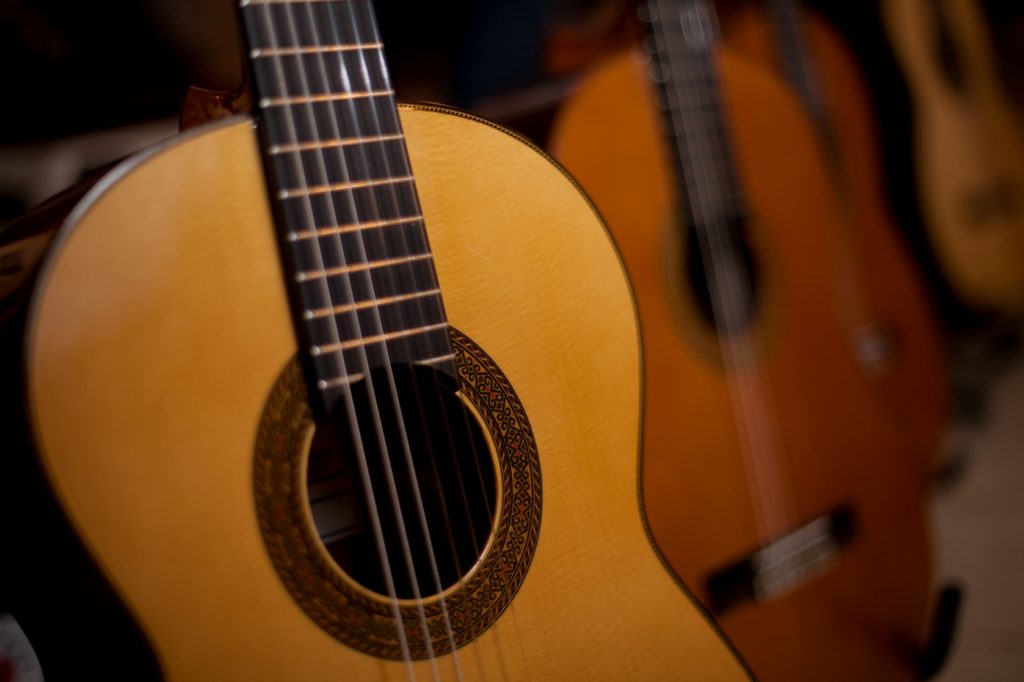
Rating of the best classical guitars
Alhambra 7.845 Open Pore 1 OP Senorita
The Alhambra Open Pore 1 Op Senorita is a small 7/8 size classical musical instrument. Suitable for beginners, this device is part of the Classical Student line. It is made of high quality wood, with excellent finishes and low weight. The top is made from solid cedar, while the back, sides and neck are made from mahogany.
The wooden areas remain open thanks to the transparent and matte finish, thus enhancing the resonance and reducing the weight of the piece. Finishing adds elegance to its appearance, including a rosette with a beautiful decor and light edging. Other features are a nickel-plated tuning machine that uses Indian rosewood for the fretboard, and springs positioned according to the Classical 3 scheme.
The optimal distance between the frets and the good height of the strings above the fretboard indicate the convenience of the guitar for beginners. This in no way affects the power and volume. The nut (50mm wide) and saddle are made of melamine synthetic material, transmitting vibration remarkably while contributing to a round and crisp sound.
- the instrument is aimed at beginner musicians;
- excellent quality of the material;
- open pores and beautiful finish;
- the peg mechanism is nickel-plated.
- not identified.
Phil Pro AS - 3904 BK
Phil Pro AS - 3904 is slightly smaller than traditional dreadnoughts, so it is convenient to play on it, as well as to move and transport. The case, made of linden, gives lightness.
The democratic price corresponds to the clarity and balance of sound with a small percussion timbre.
Available in three colors:
- N - natural;
- BK - black classic;
- 3 TS - three-tone sunburst.
Mensur - 650 mm.
Phil Pro AS - 3904 is suitable for beginners, as well as live music lovers at celebrations or on vacation.
- suitable for beginners;
- democratic price.
- not identified.
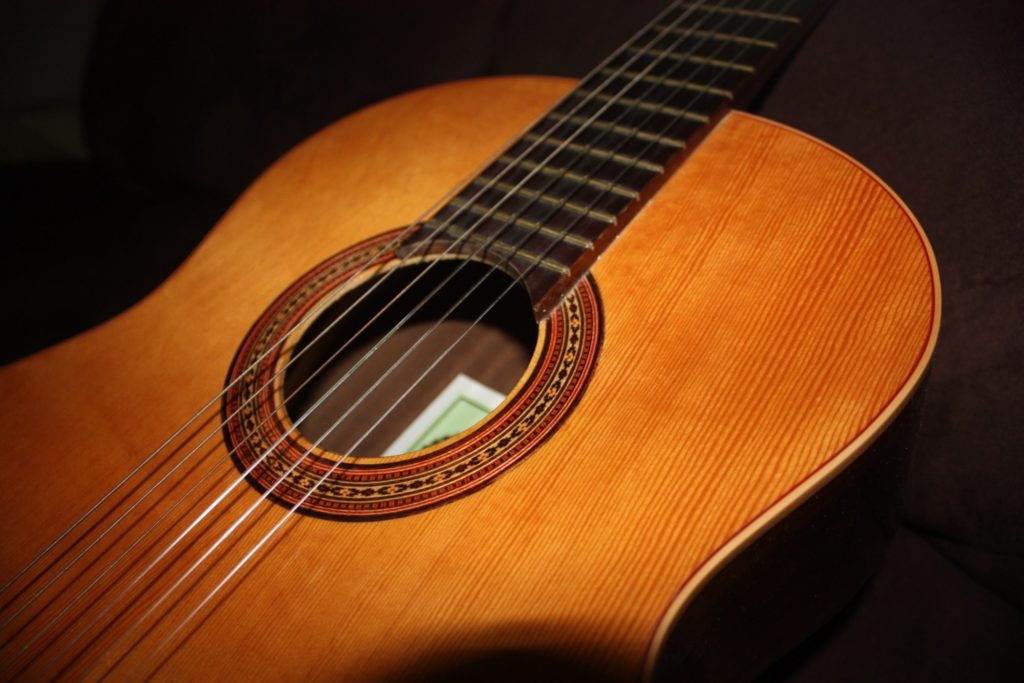
Rockdale Modern Classik 100-BK
The Rockdale Modern Classik 100 – BK is a traditional classical six-string guitar without a pickup. Guitars of this company stand out for their excellent sound output and low price. The guitar neck is made from a type of mahogany (nato), and the fretboards are made from artificial ebony. The guitar scale is 650 mm, the deck is finished with a glossy finish, the unit is black.
The top and bottom soundboards are made of agathis, as is the side. The instrument will delight beginners with its pleasant overtone and balanced sound throughout the entire range. The top deck of some models is finished with elegant piping.
- pleasant overtone;
- balanced sound throughout the range.
- not detected.
Yamaha C40
Yamaha C 40 - presented by the Japanese manufacturer as a model belonging to the "C" line, having a full size. It is assembled from high-quality materials, produces excellent sound, is quite comfortable during the game and is not too expensive. This is an excellent choice for beginners and those undergoing initial training. Like other models of the company in question, it passed all the necessary tests and quality checks.
Not too loud and pleasant sound gives even more enthusiasm and confidence. The soundboard, located in the upper level, is composed of spruce wood, often used in musical structures, which has positive acoustic properties. The body of the CG contains meranti wood, also known as red Philippine wood with a gloss finish. The neck itself is made of nato wood with 19 frets without inlays and a flat rosewood fretboard, like the guitar bridge. The instrument is presented in natural color with chrome tuners RM – 1252X. The YAMAXA C 40 has nylon strings.
- spruce wood, which has positive acoustic properties;
- high quality materials;
- makes great sound
- quite comfortable while playing;
- is not too expensive.
- not detected.
Veston C-45A BK
Budget model for musicians - beginners. A good item for non-professional players who want to get an inexpensive unit. A classic nylon string instrument with a pleasant and balanced sound.
Its distinguishing feature is the neck, endowed with a truss rod that adjusts the height of the strings for comfortable music playback.
In comparison with other classical Spanish guitars of professional level, Veston C-45 is not characterized by high cost, practically does not require special care and unusual conditions of detention.
- relatively inexpensive;
- undemanding to care and maintenance.
- not identified.
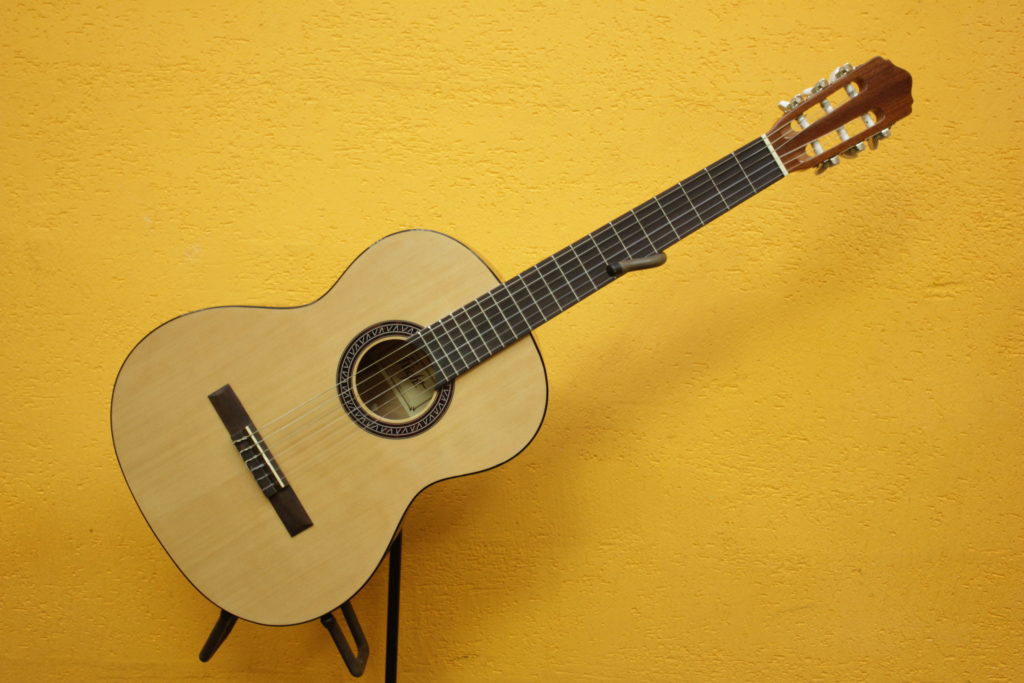
Flight C-120NA 4/4
The shape of the body and nylon strings of the classical guitar are great for students in music school and home learning to play the instrument.
Experts recommend choosing nylon strings for the initial gain of experience, which deliver the minimum amount of inconvenience during the game. The Flight C-120 is a full-sized device and is suitable for children and adults who are just beginning to learn the art of guitar.
The clear sound of the top sounding board, which is necessary for competently developing hearing, is provided by a spruce blank. The sapele sides and back are similar in composition to mahogany, providing softness and depth to the sound. The 6 mm thick fretboard is made of an unusual material - kabukali, which creates a pleasant heaviness and reliability in the hand.
Comfortable playing is made due to the string height of 4mm. The undoubted reliability of the peg mechanics, which provides a smooth ride with precision and ease of tuning, and also withstands the system.
The original rosette pattern is striking, harmonizing perfectly with the base and dark piping on the top and bottom decks. The instrument is presented in natural colors with a glossy classic finish.
- unlike cheap options, the bottom soundboard is not even, but with a bulge, as on expensive devices, this shape is more correct, affecting the body resonance;
- high-quality lacquer coating allows you to cover the instrument in one layer, since a large thickness of the lacquer muffles the sound;
- the smooth running of the peg mechanics does not upset the smoothness, does not allow dust and dirt, helps to withstand the system;
- The fretboard is made of high quality rosewood, which prevents the fretboard from chafing. The thick section helps to comfortably hold the neck, which will behave stably during use;
- thorough drying before assembly allows for colorful sounds and reduces the possibility of deformation in the event of improper storage.
- not identified.
Strunal 4671 - 4/4
Combines the highest degree of performance, with a bright and clear sound and a decent price. Therefore, if the choice fell on the Strunal 4671 guitar, you can safely buy the proposed model. Selected aged beech for the neck, spruce top and bog maple back and sides ensure good acoustics and long life. Nickel tuning heads are combined with nylon strings, creating the ability to tune, delicately debug, play a wide variety of different repertoires performed on this device.
- good acoustics;
- long service life.
- not identified.
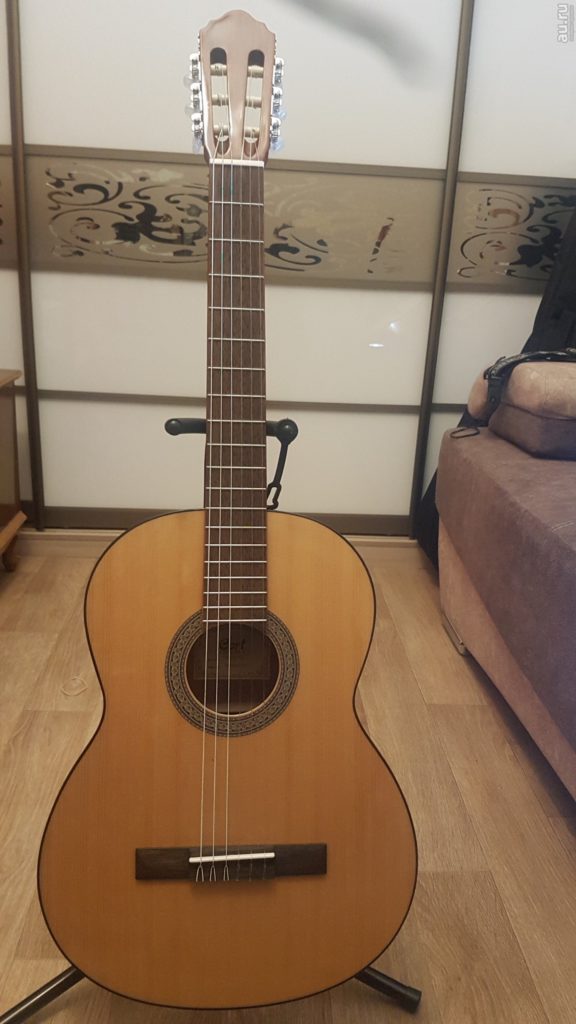
Cort AC100 – OP Classic Series
Refined modern model, featuring improved resonance and authentic sound. The combined wood species give the guitar an amazing and delicate sound.Units of the series "forgive" inaccuracies in performance, "do not require" error-free play.
Nylon strings are treated with an anti-corrosion agent to resist fading and retain strength and vitality. If the guitar has been out of work for more than one week, the strings look fresh.
- the deck on top is made of spruce, which has a balance between flexibility and strength. It is great for playing numerous game genres and styles;
- mahogany back and sides, a material that has been standard on acoustic guitars for a long time;
- the springs are well distributed, the spring system increases the vibration of the nylon strings;
- the neck curl adds extra comfort to the thumb on the left hand.
- not identified.
Buying Tips
- Appearance should please the buyer. But more important is the material from which the guitar is made. You should not purchase a tool consisting of one plywood, despite the beautiful appearance.
- Be sure to pay attention to the quality of the strings. Better if they are nylon, they are easier to learn to play, only they do not have a rich and spacious sound. The strings and neck should be 3mm apart at the 12th fret. It is necessary to check that the extreme strings do not go beyond the boundaries of the neck plane. Although you can always replace them and buy the ones you like.
- It is worth inspecting the tool before buying for the presence of an uneven surface, scratches, chips. Small imperfections can ruin the sound or the setup. If the neck is attached to the body with any bolt, the device must be immediately discarded.
- You should try out the guitar by playing some melody.If you hear bumps or rattles, or poor sound quality, you do not need to buy it. Before settling on the device you like, it is better to examine several models. So you can choose the tool to your liking.
- It is worth paying close attention to the inspection of the guitar neck. It should have a perfectly flat ebony overlay. It is necessary to shake the strings, clamping them at different frets. There should be no rattling, the frets must be parallel to each other and be even.
Conclusion
Purchasing and selecting the right guitar involves looking for flaws in the mechanics and evaluating the tone. If the guitar is selected for the first time, you can ask the seller for help. If it is possible to invite a familiar connoisseur who understands guitars, you should seek help from him.
new entries
Categories
Useful
Popular Articles
-

Top ranking of the best and cheapest scooters up to 50cc in 2022
Views: 131650 -

Rating of the best soundproofing materials for an apartment in 2022
Views: 127689 -

Rating of cheap analogues of expensive medicines for flu and colds for 2022
Views: 124518 -

The best men's sneakers in 2022
Views: 124031 -

The Best Complex Vitamins in 2022
Views: 121938 -

Top ranking of the best smartwatches 2022 - price-quality ratio
Views: 114979 -

The best paint for gray hair - top rating 2022
Views: 113394 -

Ranking of the best wood paints for interior work in 2022
Views: 110318 -

Rating of the best spinning reels in 2022
Views: 105328 -

Ranking of the best sex dolls for men for 2022
Views: 104365 -

Ranking of the best action cameras from China in 2022
Views: 102215 -

The most effective calcium preparations for adults and children in 2022
Views: 102011
